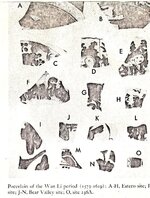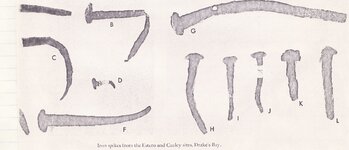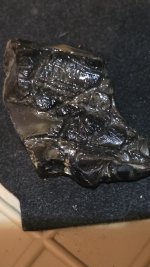NOAA, Spain Announce Cooperative Arrangement to Preserve Maritime Underwater Heritage
December 1, 2010
NOAA’s Office of National Marine Sanctuaries and Spain’s Ministry of Culture announced today the signing of a memorandum of understanding outlining a framework to jointly identify, protect, manage and preserve underwater cultural resources of mutual interest within their respective areas of responsibility.
The arrangement calls for the exchange of information on actual or potential identification and location of underwater cultural resources, research and archeological examination of the resources, provision of information concerning potential or actual unauthorized disturbances of underwater cultural resources, cooperation with nongovernmental organizations engaged in historical or archeological programs compatible with the objectives of the arrangement, and preparation and dissemination of educational and outreach materials.
“Today marks the beginning of a more formal and active interaction between NOAA and Spain as we learn from each other’s archives and share that information for a better understanding and appreciation of Spain’s important maritime cultural legacy in America,” said Daniel J. Basta, director of NOAA’s National Marine Sanctuary Program.
“The heritage spawned by Spain’s interactions with the sea and the exploration and settlement of our coasts by Spanish mariners dates back 500 years,” said James P. Delgado, Ph.D., NOAA National Marine Sanctuary Maritime Heritage Program director. “This arrangement will give us access to the incredible records in the archives and libraries of Spain.”
An example of the type of work that will benefit from the new arrangement is the discovery of a wreck that may be the Spanish ship San Agustin, which was lost in November 1595 in the California waters of the Gulf of Farallones National Marine Sanctuary and Point Reyes National Seashore. The U.S. National Park Service located an offshore wreck site during a survey of Drakes Bay in 1982-1983. No excavation of the buried wreck site offshore has been done to confirm that it is all or a portion of the lost galleon. The National Marine Sanctuary Program, working with partners in Spain as well as the Park Service, will have a strengthened ability to discuss appropriate actions to better understand and document that shipwreck in the future.
NOAA’s mission is to understand and predict changes in the Earth's environment, from the depths of the ocean to the surface of the sun, and to conserve and manage our coastal and marine resources. Visit us on Facebook at http://www.facebook.com/usnoaagov.
http://www.noaanews.noaa.gov/stories2010/20101201_spain.html
December 1, 2010
NOAA’s Office of National Marine Sanctuaries and Spain’s Ministry of Culture announced today the signing of a memorandum of understanding outlining a framework to jointly identify, protect, manage and preserve underwater cultural resources of mutual interest within their respective areas of responsibility.
The arrangement calls for the exchange of information on actual or potential identification and location of underwater cultural resources, research and archeological examination of the resources, provision of information concerning potential or actual unauthorized disturbances of underwater cultural resources, cooperation with nongovernmental organizations engaged in historical or archeological programs compatible with the objectives of the arrangement, and preparation and dissemination of educational and outreach materials.
“Today marks the beginning of a more formal and active interaction between NOAA and Spain as we learn from each other’s archives and share that information for a better understanding and appreciation of Spain’s important maritime cultural legacy in America,” said Daniel J. Basta, director of NOAA’s National Marine Sanctuary Program.
“The heritage spawned by Spain’s interactions with the sea and the exploration and settlement of our coasts by Spanish mariners dates back 500 years,” said James P. Delgado, Ph.D., NOAA National Marine Sanctuary Maritime Heritage Program director. “This arrangement will give us access to the incredible records in the archives and libraries of Spain.”
An example of the type of work that will benefit from the new arrangement is the discovery of a wreck that may be the Spanish ship San Agustin, which was lost in November 1595 in the California waters of the Gulf of Farallones National Marine Sanctuary and Point Reyes National Seashore. The U.S. National Park Service located an offshore wreck site during a survey of Drakes Bay in 1982-1983. No excavation of the buried wreck site offshore has been done to confirm that it is all or a portion of the lost galleon. The National Marine Sanctuary Program, working with partners in Spain as well as the Park Service, will have a strengthened ability to discuss appropriate actions to better understand and document that shipwreck in the future.
NOAA’s mission is to understand and predict changes in the Earth's environment, from the depths of the ocean to the surface of the sun, and to conserve and manage our coastal and marine resources. Visit us on Facebook at http://www.facebook.com/usnoaagov.
http://www.noaanews.noaa.gov/stories2010/20101201_spain.html








